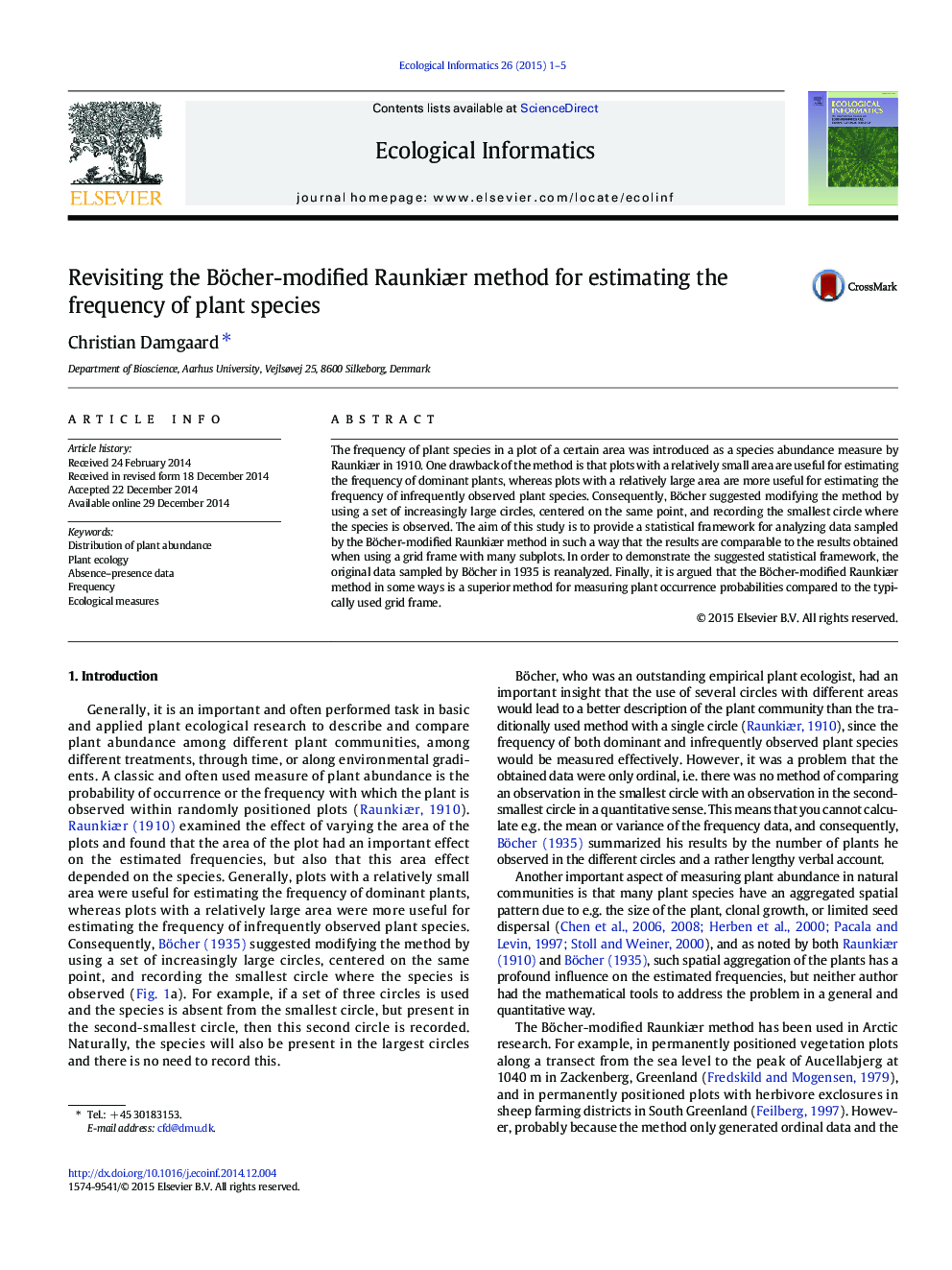| Article ID | Journal | Published Year | Pages | File Type |
|---|---|---|---|---|
| 4374821 | Ecological Informatics | 2015 | 5 Pages |
•A framework for analyzing data sampled by the Böcher-modified Raunkiær method•Absence–presence data in increasingly large circles, centered on the same point•The original data sampled by Böcher in 1935 is reanalyzed.
The frequency of plant species in a plot of a certain area was introduced as a species abundance measure by Raunkiær in 1910. One drawback of the method is that plots with a relatively small area are useful for estimating the frequency of dominant plants, whereas plots with a relatively large area are more useful for estimating the frequency of infrequently observed plant species. Consequently, Böcher suggested modifying the method by using a set of increasingly large circles, centered on the same point, and recording the smallest circle where the species is observed. The aim of this study is to provide a statistical framework for analyzing data sampled by the Böcher-modified Raunkiær method in such a way that the results are comparable to the results obtained when using a grid frame with many subplots. In order to demonstrate the suggested statistical framework, the original data sampled by Böcher in 1935 is reanalyzed. Finally, it is argued that the Böcher-modified Raunkiær method in some ways is a superior method for measuring plant occurrence probabilities compared to the typically used grid frame.
